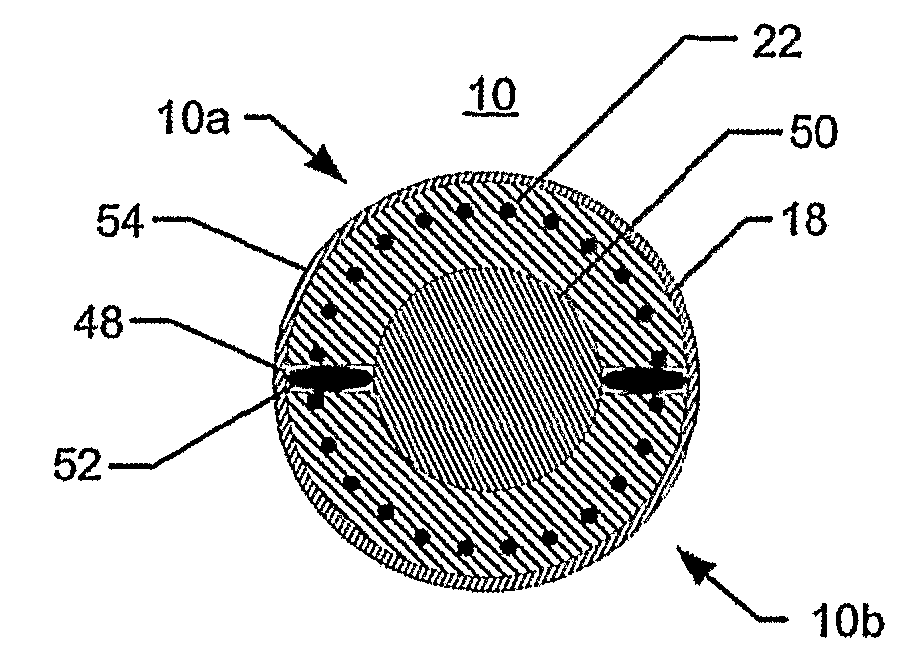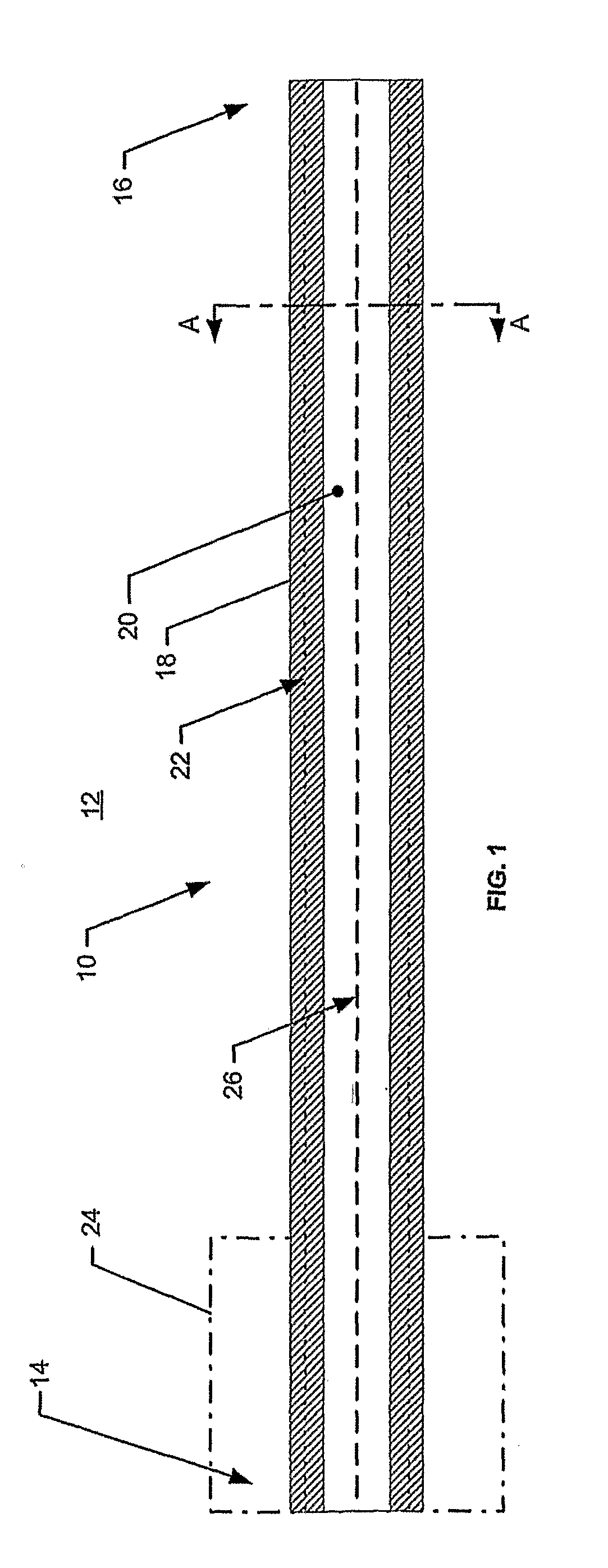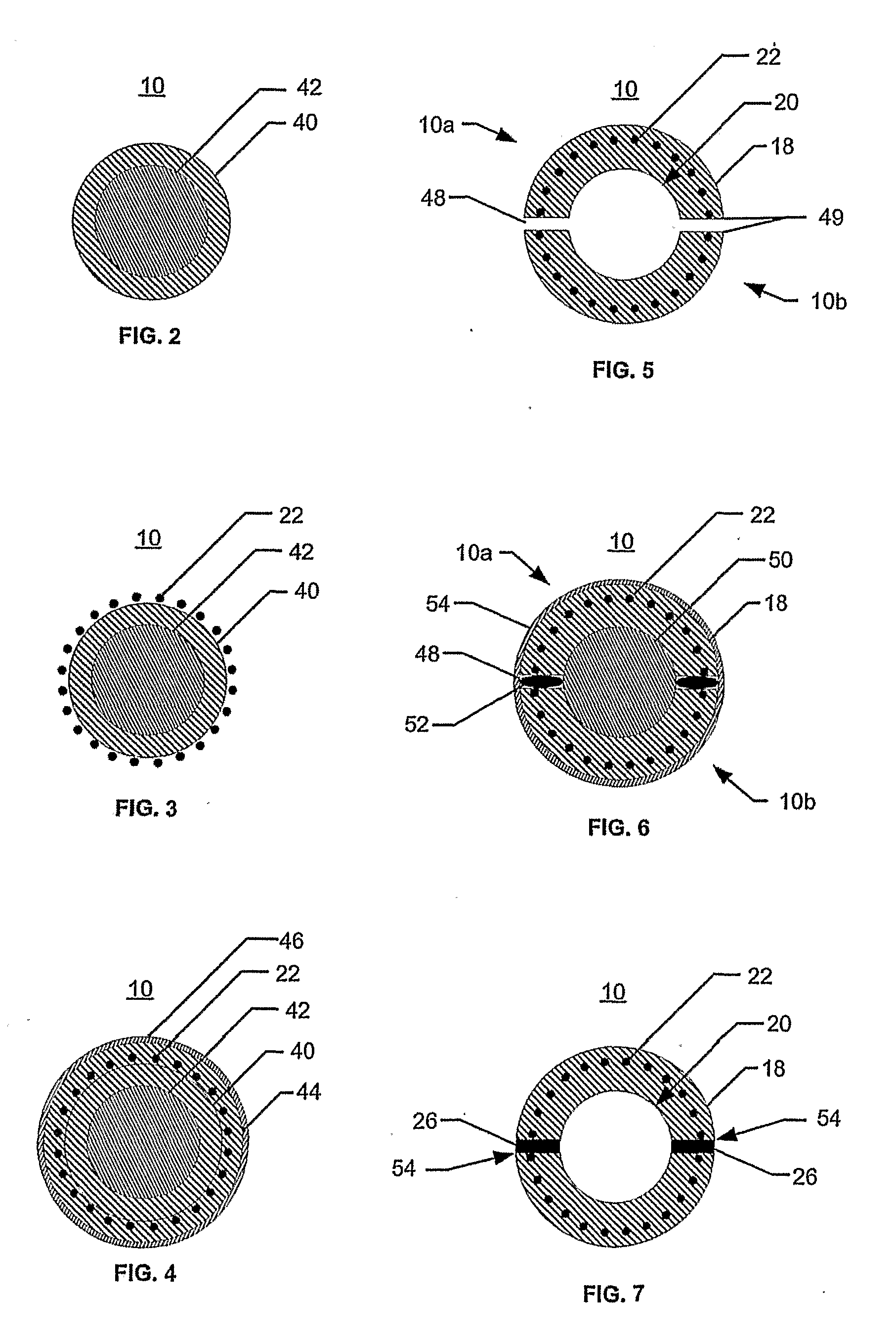Braided Peelable Sheath
a peelable, catheter technology, applied in the direction of lamination, chemistry apparatus and processes, catheters, etc., can solve the problems of increasing the difficulty and time requirement of medical procedures, and the wall structure of such catheters or sheaths is not readily splitable, so as to facilitate the splitting of the tubular body
- Summary
- Abstract
- Description
- Claims
- Application Information
AI Technical Summary
Benefits of technology
Problems solved by technology
Method used
Image
Examples
first embodiment
[0059]For a discussion of a method of manufacturing the tubular body 10, reference is now made to FIGS. 2-7 and 14. FIGS. 2-7 are latitudinal cross-sectional elevations of the tubular body 10 at various stages of the manufacturing process as if taken along section line AA in FIG. 1. FIG. 14 is a block diagram outlining the method pertaining to FIGS. 2-7.
[0060]As indicated in FIG. 2, an inner tube 40 with a wall thickness of approximately 0.0015-0.003 inches is slid over a mandrel 42 [block 200]. In one embodiment, the inner tube 40 is pre-extruded from a thermoplastic polymer (e.g., polytetrafluoroethylene “PTFE”, polyvinylidene fluoride “PVDF”, polyetheretherketone “PEEK”, etc.).
[0061]As illustrated in FIG. 3, a reinforcement layer 22 is slid over or wound / wrapped about the outer circumferential surface of the inner tube 40 [block 202]. In one embodiment, the reinforcement layer 22 is a braided or mesh layer made of stainless steel wire. The stainless steel wire may have a circular...
second embodiment
[0085]For a discussion of a method of manufacturing the tubular body 10, wherein the reinforcement layer 22 is not completely severed prior to final assembly, but is instead pre-stressed or pre-treated along the separation line or strip 26, reference is now made to FIGS. 16-21 and 28. FIGS. 16-21 are latitudinal cross-sectional elevations of the tubular body 10 at various stages of the manufacturing process as if taken along section line AA in FIG. 1. FIG. 28 is a block diagram outlining the method pertaining to FIGS. 16-21.
[0086]As shown in FIG. 16, an inner tube 40 of a flexible tubular body 10, which is similar in thickness and material to those previously described in this Detailed Description, is placed over a mandrel 42 [block 400]. In one embodiment, the inner tube 40 will have a single cut or gap 48a running the length of the tube 40. In another embodiment, the inner tube 40 will have two or more cuts or gaps 48a forming two or more inner tube sections 40a, 40b. For example,...
PUM
| Property | Measurement | Unit |
|---|---|---|
| atomic number | aaaaa | aaaaa |
| flexible | aaaaa | aaaaa |
| stress concentration | aaaaa | aaaaa |
Abstract
Description
Claims
Application Information
 Login to View More
Login to View More - R&D
- Intellectual Property
- Life Sciences
- Materials
- Tech Scout
- Unparalleled Data Quality
- Higher Quality Content
- 60% Fewer Hallucinations
Browse by: Latest US Patents, China's latest patents, Technical Efficacy Thesaurus, Application Domain, Technology Topic, Popular Technical Reports.
© 2025 PatSnap. All rights reserved.Legal|Privacy policy|Modern Slavery Act Transparency Statement|Sitemap|About US| Contact US: help@patsnap.com



